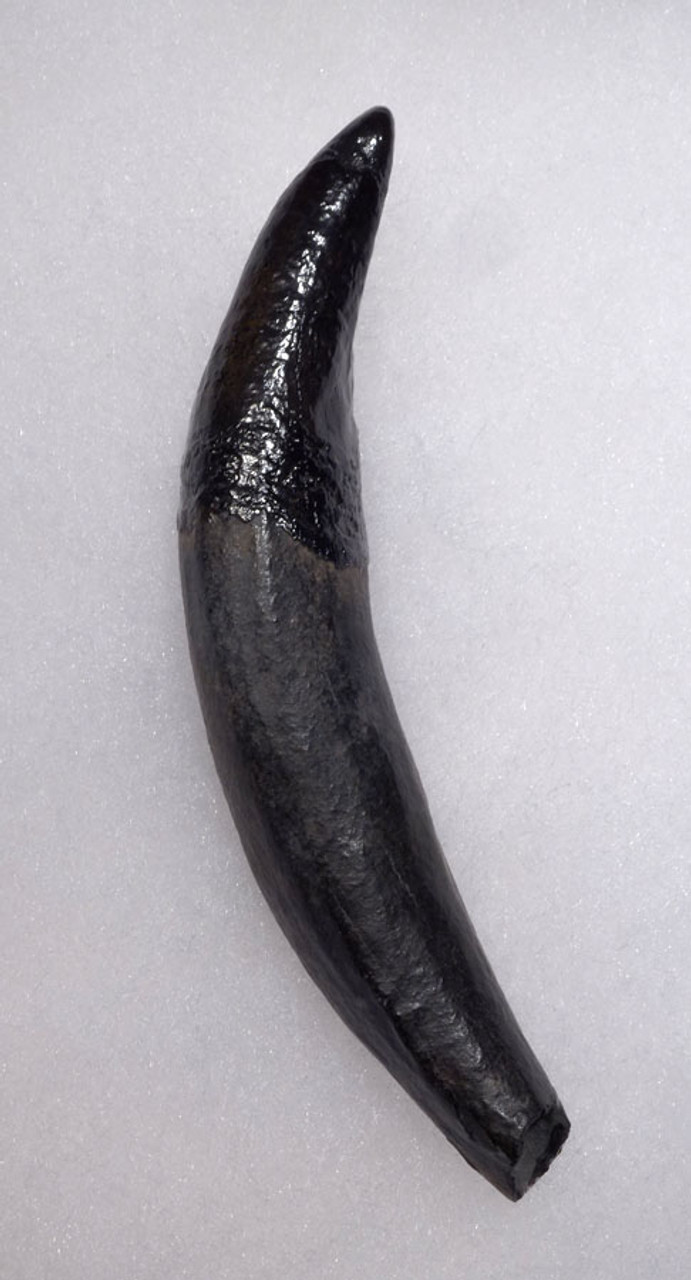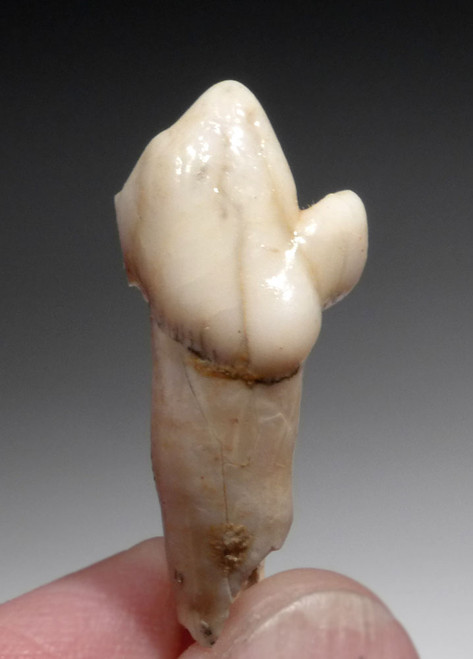Product Description
This stunningly well-preserved INCISOR TOOTH is from a prehistoric Shark-toothed Whale called SQUALODON. These were unusual marine mammals with triangular shark-like cheek teeth for slicing flesh, and long, spike-shaped incisor teeth at front of the jaws for grasping prey. This is the FIRST TIME we have offered such a supreme quality fossil incisor tooth from this UNIQUE extinct marine mammal. A prize like this deserves a place in the finest fossil collections of apex predator fossils.
This fossil is perfect to display alongside a Megalodon shark tooth collection as this creature would have shared the same waters and served as the main food source for the largest and most dangerous shark that ever lived, the Megalodon shark.
HISTORY
Squalodon (shark-toothed whale) are odontocetes that lived during the early-middle Oligocene into the middle Miocene, about 33 to 14 million years ago. The genus Squalodon belongs to the order Odontoceti, the toothed whales. They are named after the shark Squalus because their cheek teeth look like the teeth of a squalus shark. The unique-looking squalodontids were likely distributed throughout the world in warm waters during the Oligocene and Miocene. Squalodontidae became extinct in the middle of the Miocene, leaving no descendants.
These whales are characterized by both ancestral and modern features. Their teeth are the most evident ancestral feature. At this time in history other toothed whales were evolving simple conical teeth while Squalodontidae retained their primitive dentition that their ancestors (the archaeocetes) had developed. Today living odontocetes have little variation in their teeth.
Squalodontids' teeth are much more complex and are widely spaced apart. Their cheek teeth are triangular and serrated for grasping and cutting. Due to the efficiency of their primitive dentition, squalodontids could have a diverse variety of prey. Another ancestral quality of the Squalodontidae is their necks. Squalodontid necks are more compressed than their ancestors, the Archaeoceti. Compared to toothed whales at that time, the squalodontids were likely more mobile. Paleontologists also believe that the dorsal fins were reduced but larger than that of the ancestors. Shark toothed whales also possess many modern features. Their crania were well compressed, their rostrums were telescoped outward, and their skulls show proof of the origin of echolocation.
 US DOLLAR
US DOLLAR
 EURO
EURO
 AUSTRALIAN DOLLAR
AUSTRALIAN DOLLAR
 CANADIAN DOLLAR
CANADIAN DOLLAR
 POUND STERLING
POUND STERLING




















